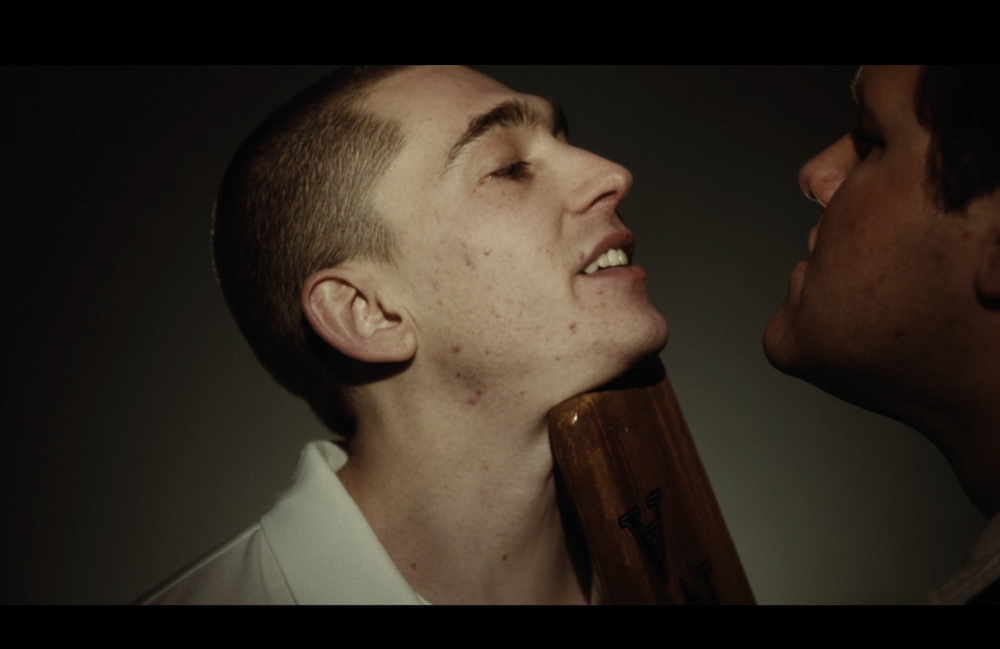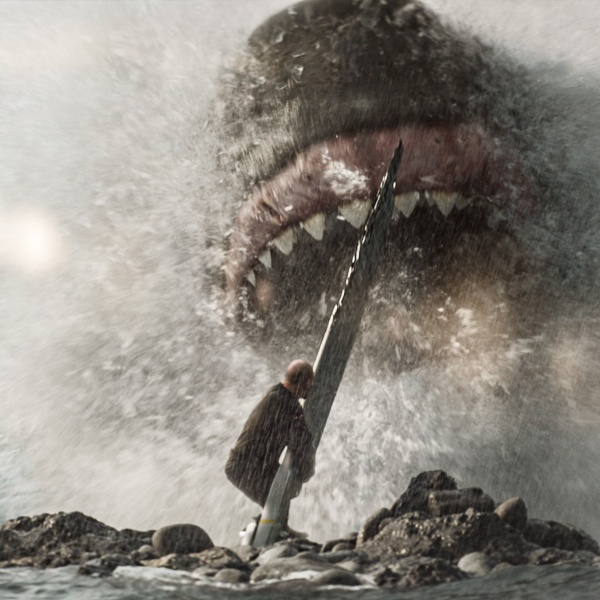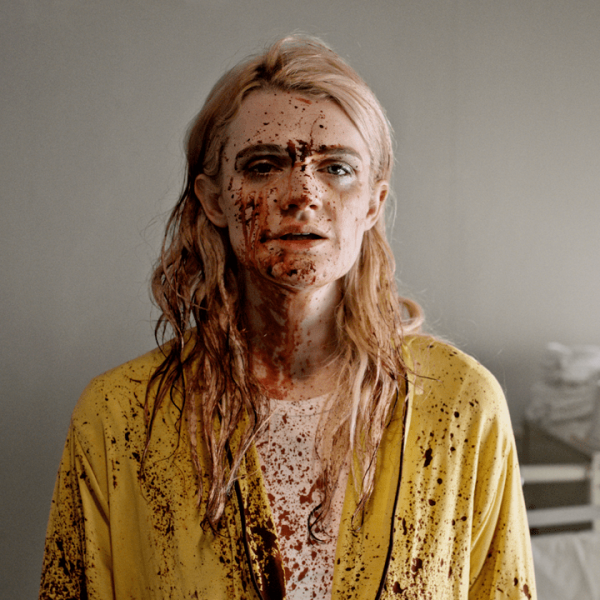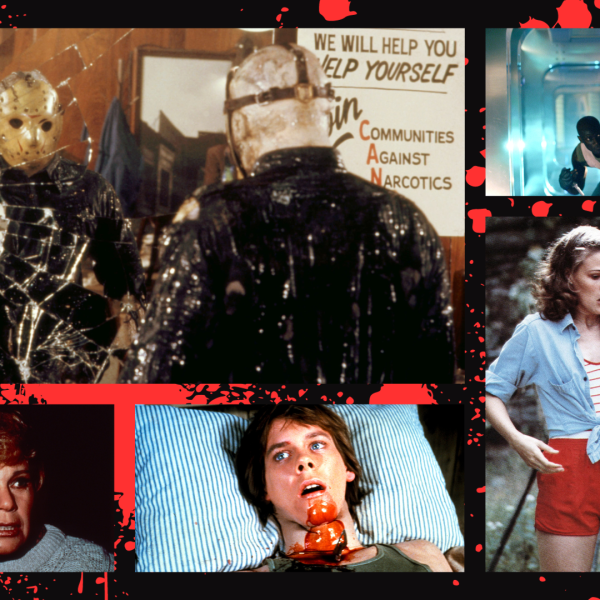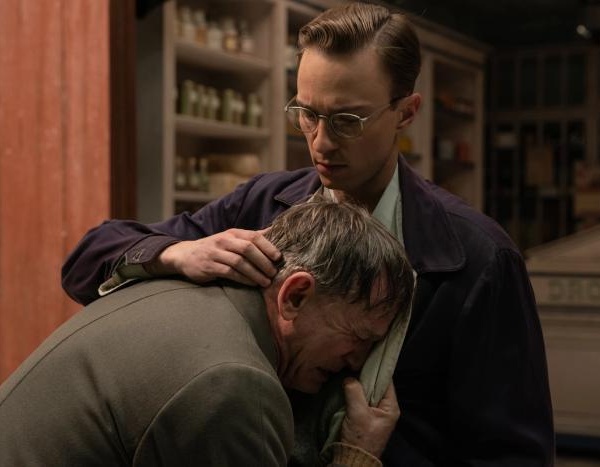You might think “The Line” is simply a film about illuminating the bad behavior of college fraternities and their dangerous hazing practices. You’d be wrong. Yes, that is the subject matter in question, but in the hands of first-time feature director Ethan Berger it’s a richly drawn, slow-burn character study that suddenly becomes a breathless thriller.
There’s a pivotal scene that occurs almost two-thirds of the way into the movie that marks the moment that “The Line” becomes one of the great suspense movies in some time. It’s a hazing scene in which the worst possible traits of Greek Life pledging are actually just a cover for a battle of wills between two guys who hate each other: Frat brother Mitch (Bo Mitchell) and pledge Gettys (Austin Abrams). Mitch is all “Animal House” bluster but deeply insecure — with a wealthy businessman father played by an imposing John Malkovich who demeans him at every turn — and he feels, though never expresses, that Gettys, more polished in every way, has been bullying him. So he in turn bullies Gettys.
It all culminates in a hazing scene where Mitch is asking Gettys a litany of questions about the history of their fraternity while beating him with a paddle. The ritual itself is vile, but it’s actually being used for something more than that: For these two would-be alpha males to confront each other, almost like a duel.
The surface details of the hazing ritual all feel very true to life — Berger trained a camcorder on a former University of South Carolina frat brother to record eight hours of him talking about the abuse he and others faced — but used to create extraordinary cinematic tension. The funny thing is, Abrams wasn’t even originally intended for the character he plays. He first read for a part that ultimately went to the late Angus Cloud in the film, before an opportunity opened up to play Gettys.
In a conversation at the Sarasota Film Festival, Berger and Abrams told me how they brought this extraordinary scene — which should have distributors taking notice — to life.
IndieWire: At times, Gettys, in standing up to the humiliations of the hazing rituals, seems to be challenging the system. And yet there’s always in the back of your mind that he’s someone who clearly comes from immense privilege and is just going to become as bad as everyone else.
Abrams: I don’t know if it’s him specifically challenging the system. I just know for myself, even playing this role, getting really annoyed, personally, by [the fraternity brothers] kind of telling us what to do. I think it had to do with being controlled and being belittled and stuff like that, that I found to be really, personally, annoying and frustrating.
Berger: I think Gettys says it in the first scene or in the second scene of the movie, that he’s there to get girls and get really popular on campus and he admires Todd. I think that’s kind of his motivation. But then: We’re also trying to show how we define masculinity by how much trauma you can endure. And it’s like… why?

IndieWire: The hazing scene Gettys is in, Austin, is so intense we should really call it more of an interrogation scene. I can only imagine what was it like for you as an actor to portray that, to go through that.
Abrams: I mean, that was a long day. That was the last day [of shooting]. There was a snow storm and half the crew left. It was pretty crazy. I think I was working on three hours of sleep and a lot of coffee. And I don’t know. I thought that the scene… I remember really writing it actually, right? We wrote it all during the day. I didn’t really know what I was going into, in a sense. There wasn’t kind of any grand plan, I wasn’t necessarily expecting anything. It was just kind of like… It was nice to do it at the end, because you’ve kind of built up the emotion, the characters and stuff, from having done the whole shoot and the connection with everybody. And that made it a lot easier. I kind of had to go in and not think about it too much.
Berger: My attitude as a director and writer is that, if somebody has a better idea, you want to take that. You don’t want to think that whatever you write is the best thing ever. You hire other people so that they can contribute something to the project and elevate it. So sometimes people would come up with ideas that made it better and we’d go with them. Or sometimes, I’d come up with something on the spot, like in a pivotal scene with Halle Bailey and [the film’s lead] Alex Wolff where she downplays their relationship by saying “We only fucked twice.” We were doing the scene and I yelled that out and he repeated it and that’s it. It wasn’t even in the script. And so that’s the line that I think is really important. Sometimes you come up with things the day of that you know make sense and just got to trust your gut
IndieWire: Austin, you’ve been in some intense things in your career, but where would you say that that hazing/interrogation scene ranks in your career today, in terms of just the intensity factor?
Abrams: Definitely the most. I mean, it’s one of the laborious things I’ve done, I think. That’s definitely the most intense though, I think, this one.
Berger: We shot the scene in half a day, because the whole movie was filmed in just 17 days. Like Austin said, there was a snowstorm, the first in years in Oklahoma, the day we shot it, and it was our last day and I was panicked, it was just this huge thing, clearly. All the actors had eaten their lunch while they were rehearsing. It was really inspiring.

IndieWire: I know many of the surface details in the film were inspired by the University of South Carolina alum you spoke to, but a lot of viewers may not realize that a number of University of South Carolina frat brothers are actually in the movie as background characters. What else did you do to capture the specificity of this culture?
Berger: So Austin actually went to [University of South Carolina fraternity] SAE’s semi-formal before we shot. [Wolff] and I went to SAE and spent some time there. The pledge uniform for our film’s Sumpter College is what the pledges at University of South Carolina wear: The hardhats, khaki pants and Velcro shoes.
IndieWire: It’s a uniquely co-dependent kind of relationship between fraternity brothers in this setting. Were there any cinematic inspirations you were looking to in particular to capture that dynamic?
Abrams: “The Last Detail,” I remember watching that in advance.
Berger: There’s a little bit of Randy Quaid from “The Last Detail” in these characters. Or a movie like “High Noon” or some of these westerns where the hero and the bad guy are kind of cut from the same cloth because they can both hold a trigger. I feel like that was definitely an inspiration for Mitch and Gettys’s dynamic. Keitel and De Niro from “Mean Streets” for [Wolff’s character] Tom and Mitch.
IndieWire: Well, on a lighter note, a number of my IndieWire colleagues, and myself as well, loved the scene where you were dancing to The Wanted’s “Glad You Came,” Austin, and one of my colleagues literally wanted me to ask you, to break down that scene, how did you go about that?
Abrams: I think we came up with that on the day.
Berger: We didn’t have enough money for a choreographer, but luckily Austin had actually just taken a bunch of dance lessons for “Euphoria,” and so he was in that mode from having just worked with a choreographer for the show. Which was so great: I love Bob Fosse, “All That Jazz” is my favorite movie of all time
Abrams: One of our producers, didn’t he used to choreograph dances for TV pageants or something like that?
Berger: It was something like that, yeah.
Abrams: He also just kind of came up with this stuff on the spot, and we were all practicing it. That was really fun. That was a super, super fun thing to shoot.
